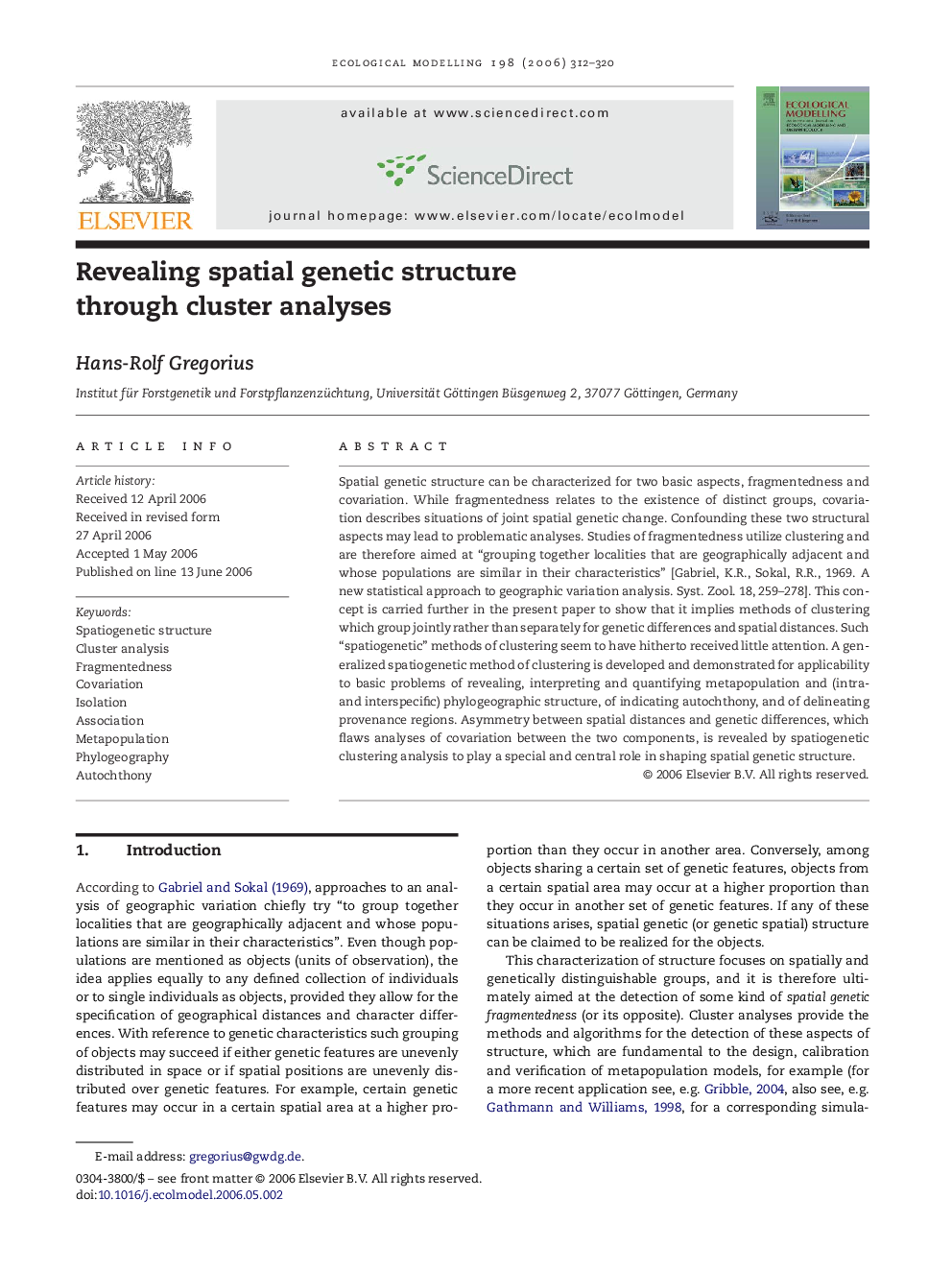| Article ID | Journal | Published Year | Pages | File Type |
|---|---|---|---|---|
| 4379057 | Ecological Modelling | 2006 | 9 Pages |
Abstract
Spatial genetic structure can be characterized for two basic aspects, fragmentedness and covariation. While fragmentedness relates to the existence of distinct groups, covariation describes situations of joint spatial genetic change. Confounding these two structural aspects may lead to problematic analyses. Studies of fragmentedness utilize clustering and are therefore aimed at “grouping together localities that are geographically adjacent and whose populations are similar in their characteristics” [Gabriel, K.R., Sokal, R.R., 1969. A new statistical approach to geographic variation analysis. Syst. Zool. 18, 259-278]. This concept is carried further in the present paper to show that it implies methods of clustering which group jointly rather than separately for genetic differences and spatial distances. Such “spatiogenetic” methods of clustering seem to have hitherto received little attention. A generalized spatiogenetic method of clustering is developed and demonstrated for applicability to basic problems of revealing, interpreting and quantifying metapopulation and (intra- and interspecific) phylogeographic structure, of indicating autochthony, and of delineating provenance regions. Asymmetry between spatial distances and genetic differences, which flaws analyses of covariation between the two components, is revealed by spatiogenetic clustering analysis to play a special and central role in shaping spatial genetic structure.
Related Topics
Life Sciences
Agricultural and Biological Sciences
Ecology, Evolution, Behavior and Systematics
Authors
Hans-Rolf Gregorius,
